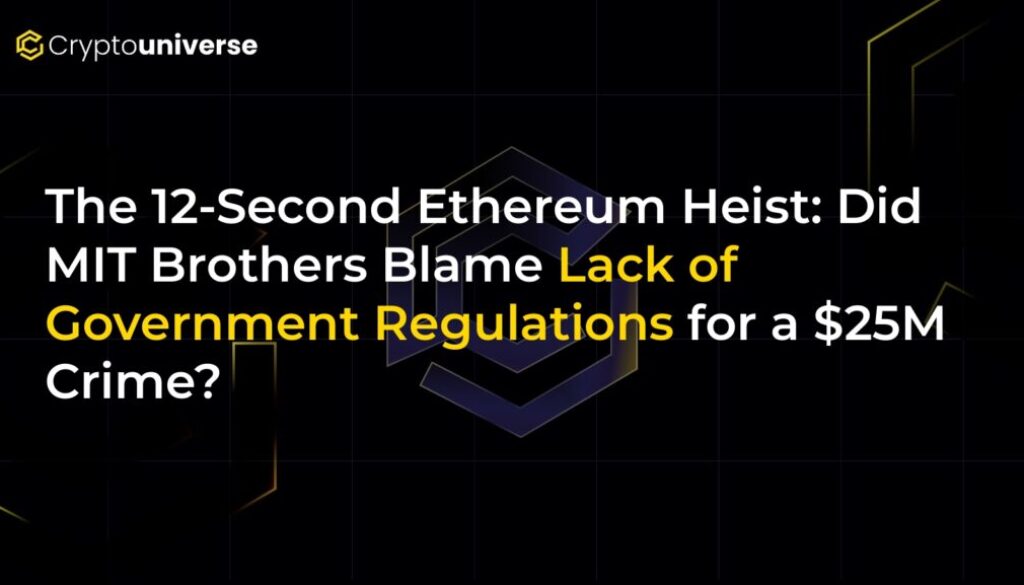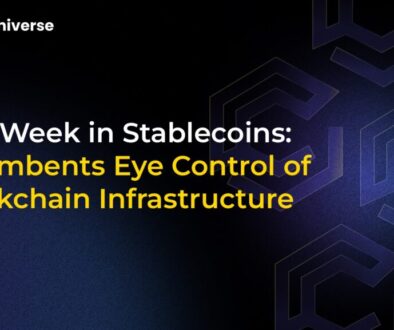The 12-Second Ethereum Heist: Did MIT Brothers Blame Lack of Government Regulations for a $25M Crime?

A $25 Million Heist in 12 Seconds: Genius or Grand Larceny?
In the fast-paced world of cryptocurrency, fortunes can be made or lost in an instant. But what if you could engineer that instant? In April 2023, two brothers, both graduates of the prestigious Massachusetts Institute of Technology (MIT), allegedly did just that. In a mere 12 seconds, Anton and James Peraire-Bueno are accused of executing a meticulously planned scheme to drain $25 million in cryptocurrency from the Ethereum blockchain.
The case, now unfolding in a Manhattan courtroom, pits the brilliance of code against the letter of the law. Prosecutors have labeled it a “first-of-its-kind” fraud, a high-tech manipulation of the very core of the blockchain. The defense, however, paints a different picture: a clever exploitation of a technological loophole in a digital Wild West. At the heart of their argument is a claim that has echoed through the crypto industry for years: the alleged
How the Alleged Exploit Worked
According to federal prosecutors, the Peraire-Bueno brothers used their elite education in computer science and mathematics to devise a novel attack. They allegedly targeted the integrity of how transactions are processed and validated on the Ethereum network.
Here’s a simplified breakdown of the accusation:
- Gaining Access: The brothers allegedly targeted Ethereum’s transaction validation process. They set up validators, which gave them a privileged preview of pending transactions before they were officially added to the blockchain.
- The Bait and Switch: Armed with this inside look, they identified profitable trades being made by automated trading bots. They then allegedly used their validator privileges to intercept and alter these pending transactions.
- The Heist: In a complex multi-step transaction, they tricked the bots into buying worthless tokens while they siphoned away the valuable cryptocurrency, pocketing a cool $25 million. The entire operation was over in the time it takes to read this sentence.
The prosecution claims this wasn’t just smart trading; it was a fraudulent manipulation that “exploited the very integrity of the Ethereum blockchain” by gaining unauthorized access to private transaction data.
The Prosecution: A Premeditated Digital Stick-Up
The U.S. Attorney’s office argues this was a clear-cut case of wire fraud and money laundering. They point to evidence gathered before and after the 12-second event as proof of criminal intent. The brothers allegedly spent months planning the attack. Furthermore, their online search history reportedly included incriminating queries such as:
- “How to wash crypto”
- “Money laundering statute of limitations”
- “Top crypto lawyers”
- “Fraudulent Ethereum addresses database”
For the prosecution, these searches reveal a guilty conscience and a deliberate effort to conceal their actions, moving far beyond the realm of a simple coding experiment.
The Defense: “Code is Law” in an Unregulated Arena
The defense lawyers are leaning into a core philosophical debate within the crypto community. They argue that the brothers didn’t steal anything; they simply outsmarted predatory trading bots by using superior code in an open and competitive environment.
Patrick Looby, one of the defense lawyers, argued that the Ethereum blockchain has “no central authority” and “no government regulations.” He stated, “Instead, economic incentives guide parties’ behaviour.” From this perspective, the brothers were just playing the game better than anyone else. Their argument suggests that in a decentralized system without explicit rules against such an action, it cannot be considered a crime.
However, this line of defense has already hit a roadblock. U.S. District Judge Jessica G. L. Clarke has barred the defense from arguing that the victims—the operators of the trading bots— “deserved it” or that the lack of regulation absolves the brothers of wrongdoing. This ruling forces the defense to confront the charges of fraud and conspiracy more directly.
A Highly Educated Jury and Broader Implications
The fate of the Peraire-Bueno brothers rests in the hands of a 12-member jury composed entirely of college graduates, half of whom hold master’s degrees. This highly educated panel will be tasked with untangling the complex technical arguments and deciding where the line between a legitimate exploit and a criminal act lies.
This case could set a monumental precedent for the world of Decentralized Finance (DeFi). A conviction could signal that even in the pseudo-anonymous and unregulated corners of the internet, U.S. law can and will apply. It may validate the view that exploiting blockchain mechanics for personal gain is equivalent to traditional wire fraud.
Conversely, an acquittal could embolden others to push the boundaries of what’s possible on the blockchain, reinforcing the “code is law” ethos. Regardless of the outcome, the trial highlights a growing tension: as digital assets become more mainstream, can they continue to operate in a gray area, or is a new era of regulatory clarity and enforcement inevitable?


